- The 2024 Dodge Charger Daytona will be launched as a two-door coupe, with a four-door version to follow.
- R/T and Scat Pack models crank out up to 496 hp and 670 hp, respectively.
- Estimated range is 308 miles for the R/T and 241 miles for the Scat Pack.
- Scat Pack hits 60 mph in 3.3 seconds and does the quarter mile in 11.5 seconds.
2024 Dodge Charger Daytona First Drive: Bigger, Better, Faster — and Electric
Electrifying Americana
There's a saying that goes, "You either die a hero, or you live long enough to see yourself become the villain." This is where the Dodge Charger currently finds itself. Currently the poster child for straight-piped hooliganism, the outgoing — and very much old-school — Charger has reached the end of its epoch. Much like the asteroids of high fuel prices and stratospheric insurance premiums that wiped out the first round of muscle cars in the 1970s, emissions and fuel economy requirements are choking out the last of the true muscle cars today. But if the Charger wants to survive — and Dodge very much wants it to — it will need to evolve. Enter the all-new and very different electric Dodge Charger Daytona.
So, what's new?
Everything. This isn't a refresh or even a redesign; this is a whole new car. The Charger was designed from the ground up to have both gasoline and electric powertrains. With the Challenger burning out into the sunset, the Charger will be available as both a two-door coupe and a four-door sedan. Initially, the Charger will be released in two-door EV format (that's what I'm driving), with the four-door and gasoline-powered versions coming in 2025. For extra clarity, all-electric Chargers will be known as Daytonas while the gasoline-engine models will be known as Sixpacks.
Size-wise, the Charger is bigger than the outgoing version in every way. Though it might be hard to tell from photos, the new Charger has a 1-inch longer wheelbase (up from 120 to 121 inches), is 5 inches longer, and is 1.6 inches wider. It also has a wider track (the distance between the left and right side wheels) than the current Widebody sedan. Finally, the Daytona EV is 1.4 inches taller than the current Widebody Charger, but judging by the wheel gap, there's plenty of room to drop the Charger down to improve its stance.
Inside, it's the same story. Nothing carries over from the previous model, and the dashboard is dominated by two digital screens and a squared-off steering wheel. No matter which Charger you get, the 12.3-inch touchscreen is a constant, but the instrument panel is available as either a 10.3-inch or 16-inch display. Interior room is increased compared to the old model, and while the back seat has a bit less legroom than the current Charger sedan, it's got over 4 inches of additional legroom when compared to the current Challenger coupe.
What's under the ... floor?
With such a long wheelbase, you'd be right to assume the Charger is packing a big battery. With 100.5 kWh of capacity — 93.9 kWh of which is usable — the 400-volt system includes two electric motors (for all-wheel drive), with the front motor being able to disengage for better efficiency and the rear motor containing a standard mechanical limited-slip differential. Both the R/T and Scat Pack Chargers have the same electric hardware; the Scat Pack's motors just get more juice.
Speaking of juice, the R/T is rated at 496 horsepower and 404 lb-ft of torque, and the Scat Pack delivers 670 hp and 627 lb-ft. Both horsepower figures include the 40-hp boost you get when you press the PowerShot button on the steering wheel. To put those numbers in perspective, the R/T now makes more power than the current Charger 392 V8, while the Scat Pack falls only slightly short of what the nutty supercharged Charger Hellcat cranks out.
What's the range?
Just because current Charger owners don't sit around and talk about fuel economy doesn't mean we'll skip over the new Charger's range and charging stats. The R/T has an estimated range of 308 miles, and the more powerful Scat Pack should travel 241 miles. That means the R/T has a similar estimated range to a Cadillac Lyriq with all-wheel drive, while the Scat Pack has a bit more range than the similarly powerful Hyundai Ioniq 5 N. Of course, once we get our hands on these Chargers, we'll put them through the Edmunds EV Range Test to see how they really stack up against the competition.
Charging rates are also critical to an EV's appeal. Dodge says the maximum charge rate is 183 kW, and under optimal conditions, its battery can go from 20% to 80% in a little over 24 minutes. That's a little slower than I expected from a brand-new EV, but while the Charger certainly won't be the quickest to add range during a road trip, we'll get exact numbers and compare to the Charger's times and charging rates to other EVs once we get them in for comprehensive testing.
Getting inside
Even the most ardent fan of the Charger would begrudgingly admit that its interior needed a revamp. To call it dated would be charitable, so Dodge, wisely, started over. Whichever Charger you get, you stare at two digital screens. The graphics are crisp, and the IP offers a multitude of display options with various gauges and levels of information. The center touchscreen is backed by Dodge's Uconnect 5 software and its large size makes the icons easy to decipher. Still, it can be difficult to nail a selection or two with your fingertip if the road isn't particularly smooth.
But it's not all digital in here. Below the center screen is a pad of climate controls, and below that, a smattering of buttons for things like traction control and parking assistance. And then there's the gear selector. Bucking the trend of stalks, knobs and the most insidious of transmission selectors, buttons, the Charger clings to a traditional gear shifter. In a nod to Dodges of the late '60s, the shifter is described as a "pistol grip" style. Keen enthusiasts — aka old people — will note that this shifter barely resembles the old-school version that looks more like a knife handle than anything else, but hey, it's somewhat analog, and analog still has its place even in an electric Dodge Charger. Close to the shifter is the power/start button. It's just a glossy black plastic button with a typical power icon on it that is devoid of color or personality. It's a small thing, but I think it's a missed opportunity having it be so plain.
Opening the ginormous doors, you'll find the previous model's wide-boy bucket seats are gone, replaced by slimmer, more modern, yet still comfortable chairs. Stepping up to the Scat Pack delivers better and more supportive high-back bucket seats, but they're not particularly aggressive, so most body types will still be comfortable. In the back, the Charger gets a bit more interesting. There's far more legroom back here than you'd believe, and at 6 feet tall, I comfortably fit behind my driving position without complaint. Getting back there, with only two doors, isn't the most graceful, but if you spring for the optional full-length glass roof, the Charger is anything but claustrophobic.
It's a hatchback — and a good-looking one, at that
If you don't already know, the Charger is essentially a hatchback in disguise, even more so than the Audi A7. Lifting up the hatch reveals a cavernous 38.5 cubic feet of cargo space. That's more than double the size of the outgoing Charger's traditional trunk, and when you fold the rear seats down, you get enough space to drop in a bicycle. The frunk is, well, optional. Part of the Plus group, which also includes stuff like power seats, lighting upgrades, a wireless charger and a surround-view camera system, the frunk offers a tiny but still somewhat useful 1.5 cubes of storage space. Since most Chargers will likely be bought with the Plus group, you'll be hard-pressed to find one without the frunk.
If you're getting '68 Charger vibes from the styling, that's not an accident. The design team, led by Scott Krugger, visited Dodge's heritage collection and fixated on the long and menacing shape cut by the '68 model. The new design prioritizes heritage over simply being retro and mixes the '68's masked headlight look with the taillights, which have a similar look to the 2011 Charger. With both the two- and four-door models sharing almost every body panel, it was critical that the design work for both setups, so what you see in these photos is essentially the same as how the four-door will look.
To my eyes, the coolest part of the new Charger is the front end. The headlights are tucked deep into the nose, and the bright LED light signature obscures them when they're turned off. Just above that is what Dodge calls the R-Wing. It's designed with aero efficiency in mind and it adds a bit of modern flair to the more classic-looking front end. The optional illuminated logo in the middle of it just adds to the cool factor.
Does it drive like a Charger?
In a word, no. It's far superior. So much so that in under a mile, I immediately noticed the considerably stiffer chassis (25% stiffer for the gasoline-powered Chargers and 50% stiffer for the electric ones), lighter, quicker steering and a general increase in sophistication. Gone is the creaky and somewhat trucky driving experience — the Dodge Charger is finally modern.
Part of my brief time behind the wheel made the Charger feel considerably smaller than it really is; you will absolutely fill the lane, especially on a twisty two-lane road. Visibility was another weak point of the outgoing Charger, which has been rectified with the new design. Gone is the low-roof, high-sill profile of the old model. As gangster as it looked, it was a pretty difficult thing to see out of, and the older I get, the more I find good visibility to be attractive. The view out the front is wide and unobstructed, even with the giant expanse of dashboard. The side mirrors are generous, and the relatively large rear window is also a welcome enhancement.
One thing does remain the same: the Charger's touchy throttle pedal. Even in Auto mode, the Charger's throttle proved jumpy on initial tip-in. Switching it into Sport mode, to say nothing of the Track or Drag modes on the Scat Pack, made the Charger almost frustrating to drive. I get that Dodge wants to make the throttle responsive, but I'd prefer the power to come in more than a fraction of a second after I touch the pedal.
But even if you do jump on the power, the Charger's not going to do anything silly. This may or may not be a disappointment to some buyers, but with the all-wheel drive, there's loads of traction to be had. Of course, you can switch the safety stuff off, but it's nice to actually plant your foot in a Charger without having done some quick math as to where the back end is going to go. Although accurate enough, the steering is a little dead, and you still feel like you're piloting a big car, but with seat time, you can start to really drive the Charger in a way you just couldn't do in the old one.
But some buyers, including me, felt the Hellcat models' insanity was part of the Charger's charm. For those buyers, I'd recommend going straight to the Scat Pack. Not only does that move get you the maximum of 670 hp, but you have access to the Track package. That includes bigger brakes (16 inches!) with six-piston front and four-piston rear calipers, adaptive shocks, and the widest tires ever fitted to a Dodge to date: 305/35/20s up front and 325/35/20s out back. You can even opt for sticky Goodyear Eagle F1 Supercar 3 tires, but I'd recommend sacrificing the standard all-seasons if you plan on participating in any street takeovers (please don't).
Buried in the drive mode menus are two modes for said takeovers (again, please don't): Drift and Donut. Drift mode comes in two strengths, Min and Max, which allows for differing levels of nonsense, while the Donut mode just lets you do some good old-fashioned knuckle-dragging, mouth-breathing donuts. Dodge let me futz around with Donut mode on a closed course, and the new Charger is more than happy to hoon it up at the drop of your right foot. With the power and weight of the new Charger (Dodge is quoting 5,700 pounds for the R/T and nearly 5,800 for the Scat Pack), those rear tires will last about 5 minutes until they're flung off this mortal coil, so you better have Tire Rack bookmarked.
The Hellephant in the room
Dodge has done what it can to imbue the electric Charger with its heritage without falling into the trap that is retro-worship. There's still some nostalgia baked in but the Charger has moved forward in critical ways to ensure its survival. But one of the features will be arguably the most polarizing thing. And that's the "exhaust."
Dubbed Fratzonic, it's been engineered to give the Charger a muscly aural signature that merges the spacey safety sounds of current EVs with some traditional V8 rumble. The start-up is fairly dramatic and sounds very much like a jet engine spooling up before it transitions into something that sounds like an explosion. Track mode makes it the loudest, but when you throw up a few revs, the sound is far less than authentic. If you've ever heard the sound emitted by the Hyundai Ioniq 5 N then you've essentially heard the new Charger, save for the Dodge being about an octave lower. The Fratzonic system does its best work at low speeds when it genuinely sounds like a big, burbling V8. But when it's parked and is "idling" it sounds like you're in the warp core room on the Starship Enterprise.
Even though the Scat Pack can run to 60 mph in 3.3 seconds and can do a claimed 11.5-second quarter mile at well over 120 mph, it's an electric car. While that might not bother some, muscle-car enthusiasts are arguably a different breed. They want the noise, they want the drama, they want to modify stuff and add power, and they probably don't want an electric car. Then again, when the Charger was reborn as a four-door back in 2006, and a lot of old guys nearly lost their minds, it still became a sales success for Dodge.
Like most EV adoption, the Charger is not going to be cheap. The Daytona R/T starts at $61,590 and the Scat Pack ups the price to $75,185, including destination. If you lease the Charger Daytona, you are eligible for the $7,500 federal tax credit. It might be a lot to ask of Dodge's loyal fanbase, but the new Charger's appeal should transcend the usual crowd and grab buyers who want an electric sedan that doesn't look or drive like a slightly used bar of soap. Maybe we'll add one to our long-term test fleet to find out.
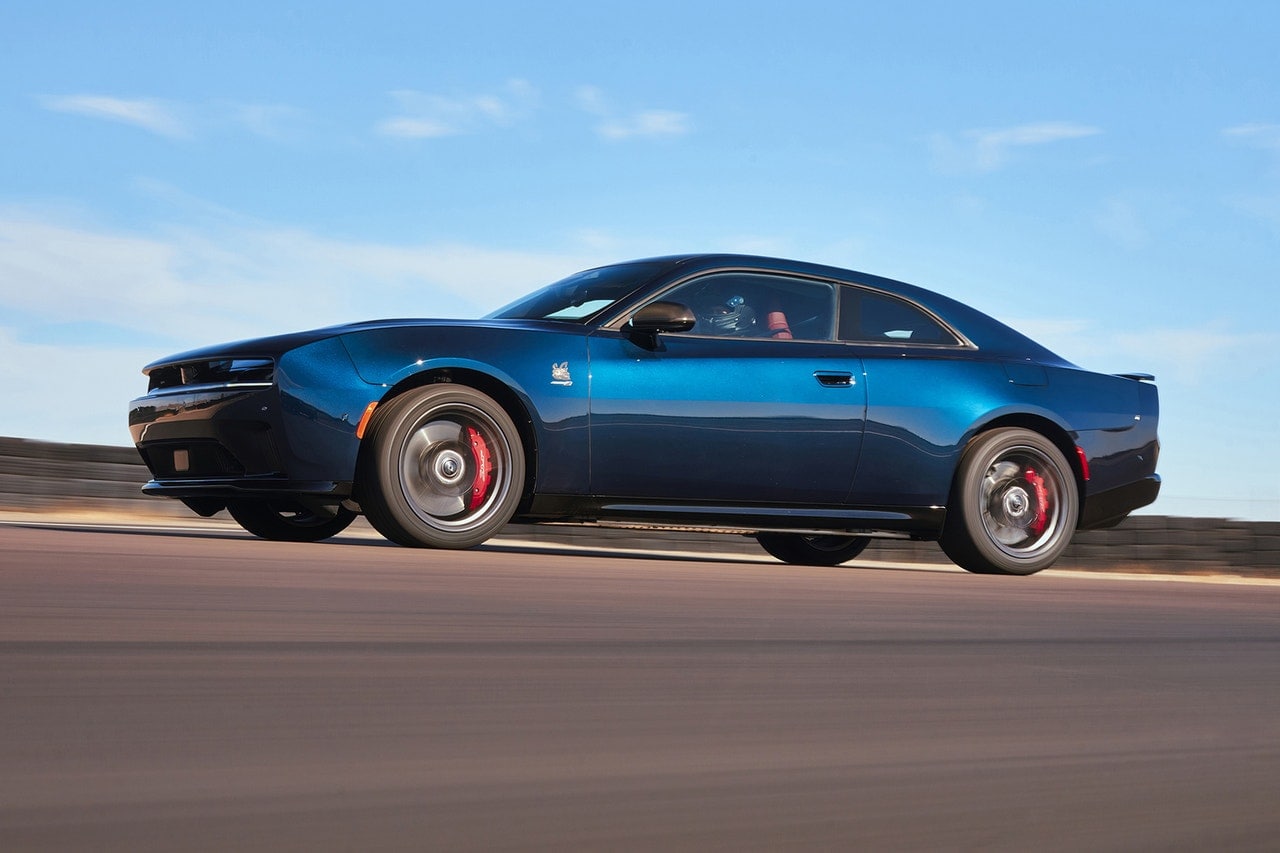

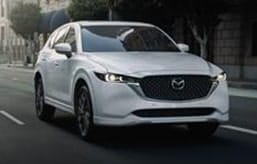
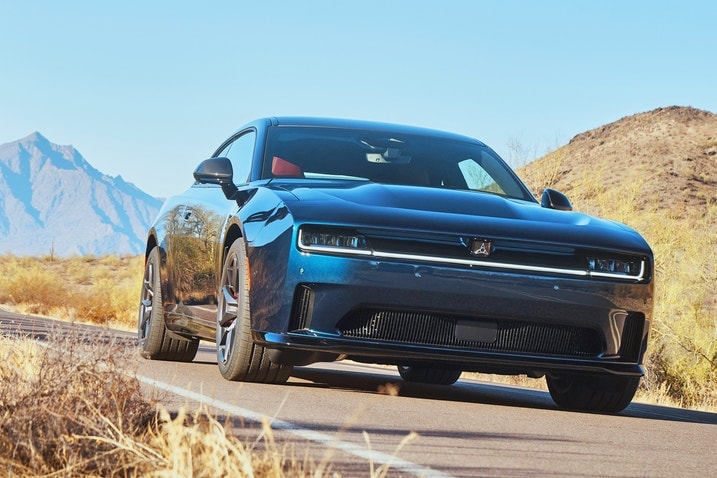
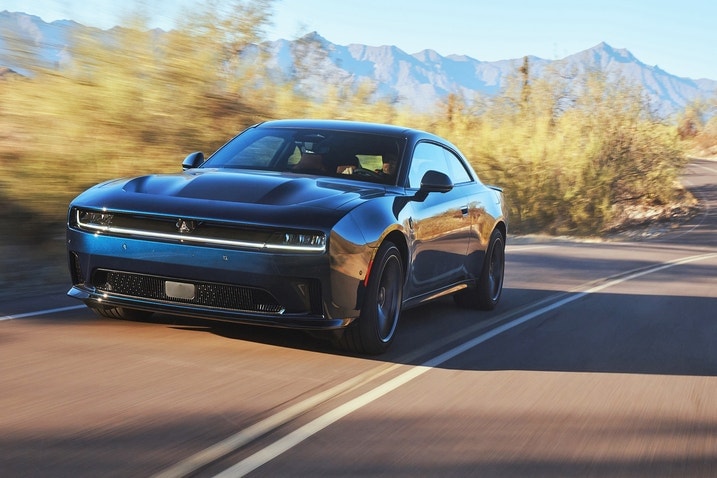
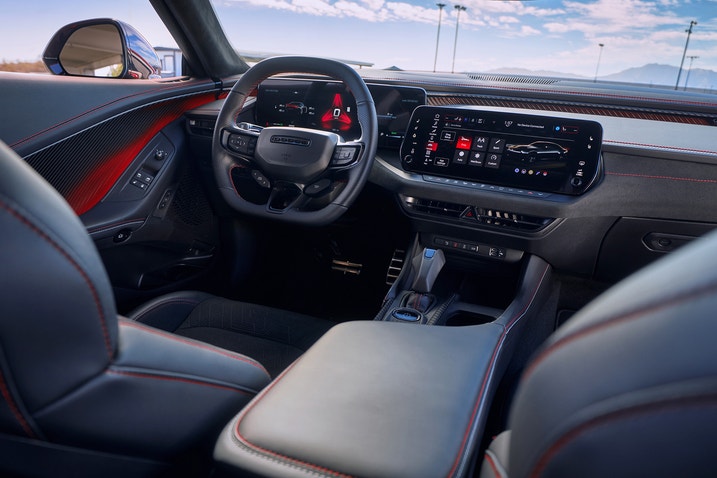

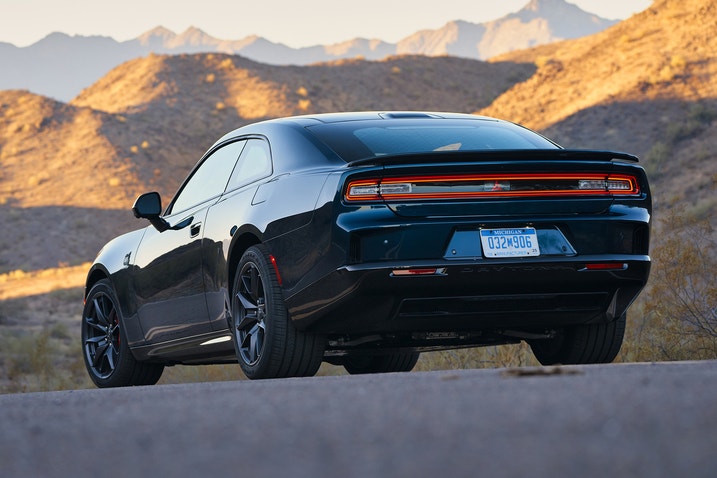
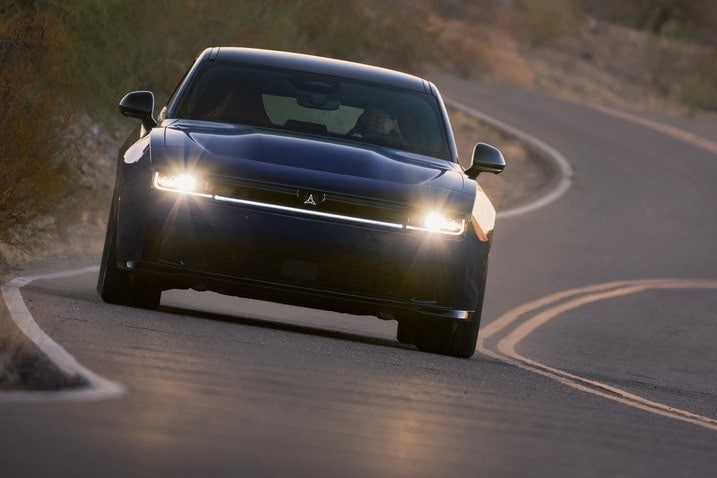

 by
by  edited by
edited by